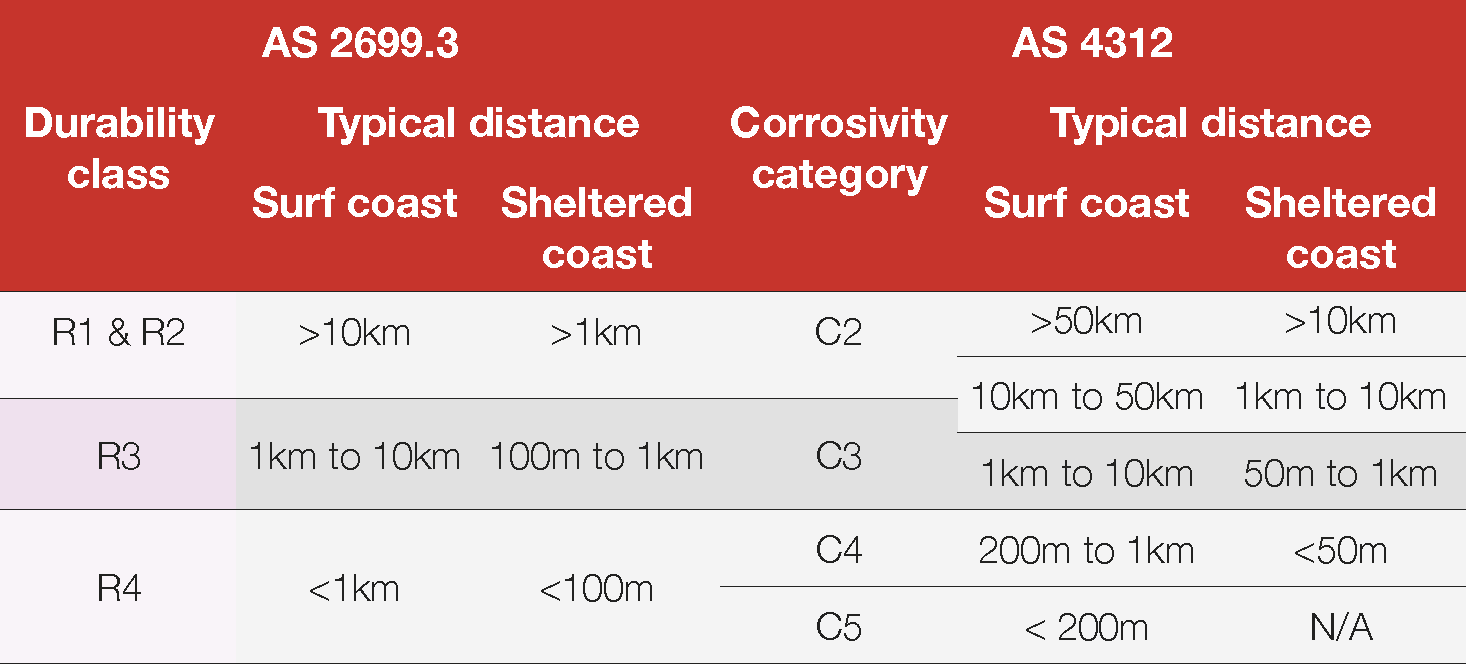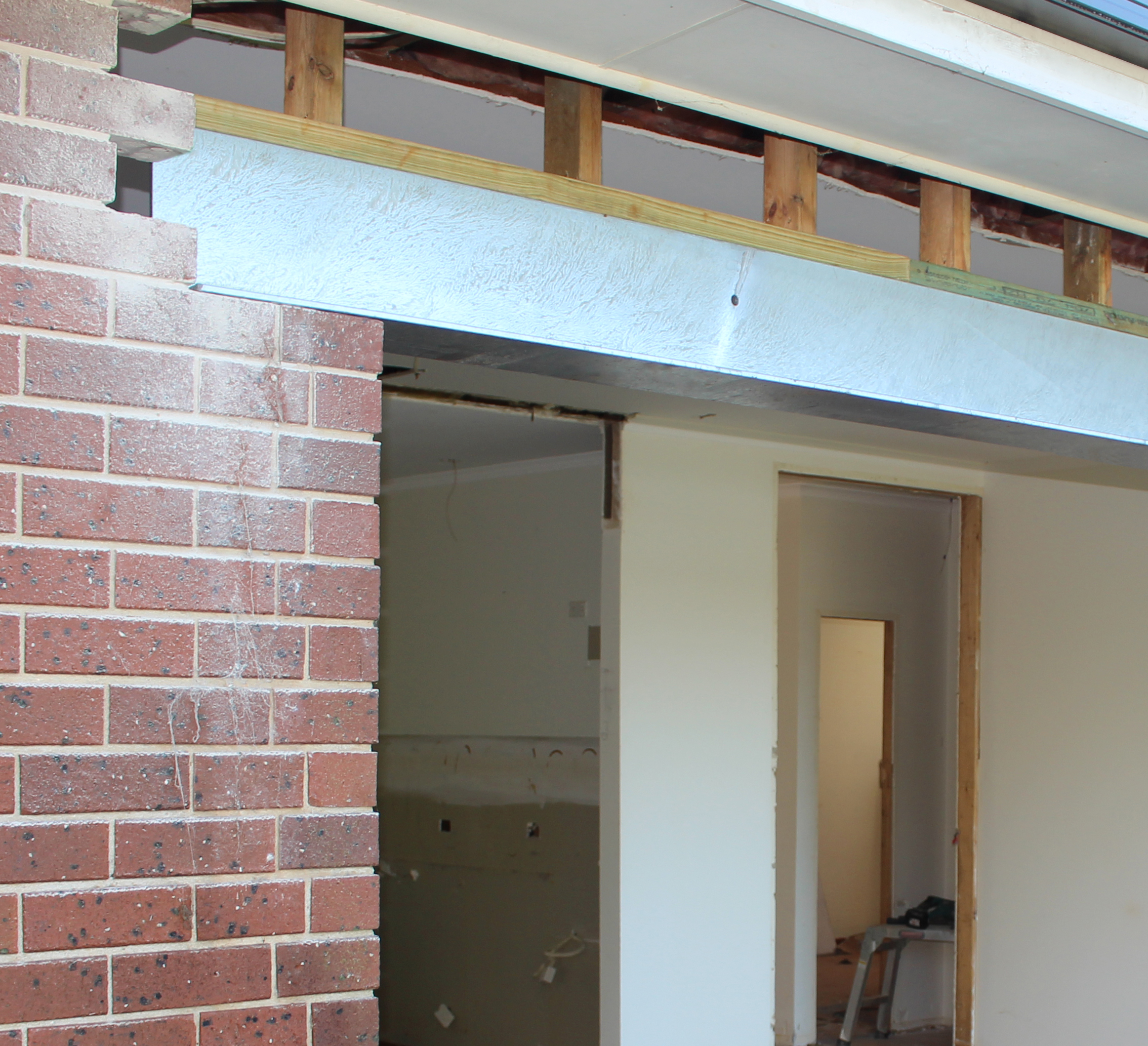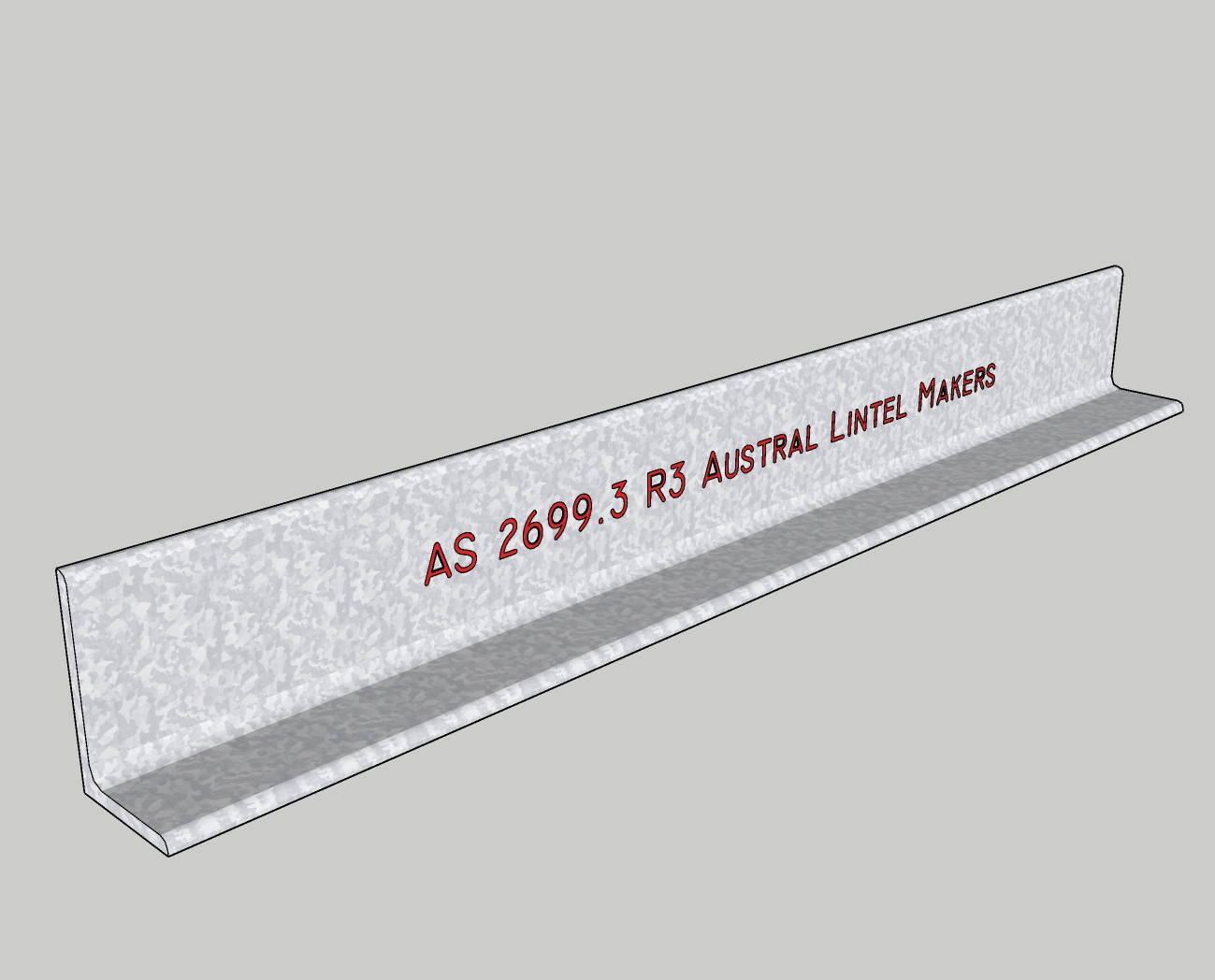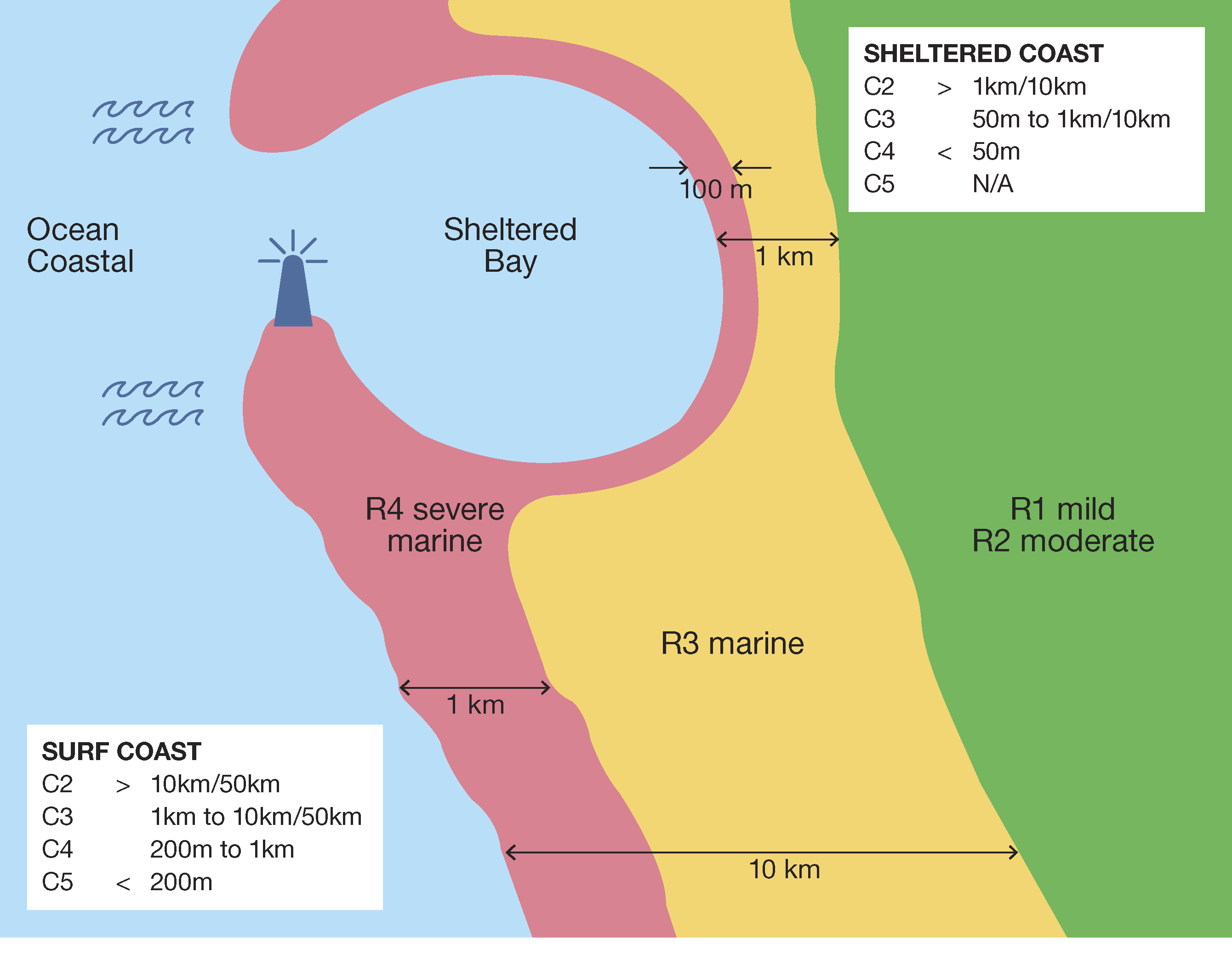Galvanized coatings for buildings and structural steel
A vital factor to be considered in the assessment of coating systems for buildings and structural steel is the relative effectiveness of coatings.
No protective coating applied to a structure after completion can provide the same protection as a galvanized coating which covers the entire surface of all components, automatically protecting areas to which later access may be difficult or impossible.
When steel members, fascia’s and other components which are to receive a final decorative or protective coating are galvanized, no surface deterioration will occur during storage, handling, erection or waiting time until completion of the project. Galvanized coatings can save considerable time and cost which might otherwise be necessary for rectification of damaged or corroded surfaces.
Exposed frame structures. Open frame industrial steel structures which are not protected by roofing or cladding are particularly vulnerable to corrosion. Normally they are sited in industrial areas and, frequently, maintenance access is difficult. In these circumstances no other coating system matches the economy and performance of galvanized coatings. Even in the most severe atmospheres a duplex system of galvanizing-plus-paint will usually provide the best practical balance between cost and the longest possible maintenance-free operating period. The galvanized coating provides a stable base for the paint film, ensuring far longer coating life, and protection should the paint film be damaged through impacts or abrasion in service.
Internal steelwork in industrial buildings. Galvanized coatings are ideal for many structures which house industrial processes; in structures where the humidity of contained air is high, as in breweries, paper manufacture and sewage treatment; and in food processing and other areas where cleanliness is essential. Whether used alone or in combination with paint coatings, galvanized steel will provide very low total long-term cost, with longer maintenance-free service periods.
In contact with building materials
Galvanized coatings give invaluable protection to steel used in all sections of the building industry. The slight etching action upon galvanizing by mortar, concrete, and plaster ceases after setting.
Galvanized reinforcement is widely specified to increase the durability of concrete elements. Durability can be increased compared to uncoated rebar by 2-6 times without increasing cover. More information is included in the Concrete section of this website.
Posts embedded in concrete
Hot dip galvanized posts are often embedded in concrete footings to extend the life in aggressive soils or for design reasons such as to provide a higher tolerance to a member’s overturning moment. The concrete/soil/steel/air interfaces should be designed and built correctly, including extending the concrete at least 250mm below the soil level, ensuring the concrete extends above the natural soil level and slopes away from the steel at a 30° angle (at least) to prevent ponding, and adding additional barrier protection such as suitably thick durable paints or wraps when the exposed atmospheric corrosivity category is C3 or above. Concrete, bricks and mortar are susceptible to corrosion in acid sulfate soils and will not provide significant protection in these circumstances. The best solution is to modify the fill, alter the concrete design and/or increase the cover if concrete use is required.
In contact with timber
Galvanized steel is often used in conjunction with timber in structural steel and as components (bolts, nails, plates, etc). When galvanized steel products and fasteners are installed in direct contact with unseasoned timber it will be necessary to protect them by the application of suitable paint, wrap or other isolating barrier (e.g., nylon washers or sleeves).
In structural applications in atmospheric or embedded conditions, galvanized steel may be required to be isolated from timber through suitable paints, wraps or other isolating barriers to increase the durability. A common application being I-beam or channel retaining wall posts with timber sleepers, where the timber facing elements are painted with an isolating paint.
Timber products treated with cured copper-based preservatives (ACQ, CCA, CuAz) are suitable for use with galvanized steel where the building is protected by a eve overhang of minimum 600mm, average rainfall does not exceed 1000mm (e.g. Melbourne, Adelaide & Perth but not Sydney or Brisbane) and the building or structure is designed and built to exclude ‘moisture traps’ both during erection and in subsequent use (Source: EWPAA Technical Note Issue 2, 2012).
Boron treated timber is suitable for indoor applications only and galvanized steel of all types is well suited for use in this application.
LOSP treated products are excellent for use with galvanized steel, although exposure of products to coastal areas will reduce durability of the structure and is not recommended.
Lintels
A lintel is a load bearing beam, often made of steel, which spans the top of a door, window, or other opening (for example, a garage) in a building. The lintel acts to distribute the load to the edges of the opening and is designed to minimise the deflection across the opening.
Access for maintenance is not always easy because lintels are built into the structure, so it is normally necessary to specify a solution that will last at least the design life of the building. In most situations a 50-year design life is specified.
Once rusting begins in a lintel, it cannot be stopped without incurring major costs and disruption to the building fabric. The exposed surface may be repainted but there is no treatment for concealed areas. The advance of corrosion will continue until the expansion of steel corrosion products causes cracking of the brickwork and ultimately, serious structural damage.
The durability of lintels is dealt within the Australian Standard, AS 2699.3. The new revision became available in 2020 and the update was a 4-year process utilising a committee of industry experts and included consultation with the end users, specifiers, and industry bodies.
Just like the previous edition, the new lintels Standard deals only with durability and there is a requirement that lintels must last at least 50 years without adversely affecting the function of the surrounding masonry. The structural design and installation of lintels and their supports is covered in other Standards, including AS 3700, AS 4773.1, AS 4773.2, and AS 4100.
The National Construction Code (NCC), Section 3.3.5.12 (b) (vii) states that steel lintels must comply with the corrosion protection requirements of Table 3.3.5.6 of the NCC in accordance with AS 2699.3. The Standard has also been simplified so there is now a single table of acceptable design solutions, indexed by durability classification (Table 8). An acceptable design solution for a durability class is also considered suitable for lower durability classifications. For example, an R3 solution can be used for an R2 design.
Table 8 Hot dip galvanized lintels available in AS 2699.3
Any lintel with a coating that is modified, i.e., by cutting, welding, or where damaged, must have the coating restored to provide an equivalent level of protection provided by the original coating.
Each design solution description has been carefully written to ensure that when purchasers specify from the table, they can easily check compliance – and in most cases these tests can be carried out quickly and on a building site if required.
Tests and labelling requirements for coating thickness are included in the Standard in a new Appendix and the purchaser can ask that a conformance report is supplied with their purchase. Lintel manufacturers must have available conformance reports on their generic product range. Further compliance requirements include the need to permanently mark each lintel with the Standard, the durability class, and the manufacturer’s name.
Determining the required durability class: A new informative Appendix is included in the Standard which shows the simplified relationship between the required durability classification of masonry described in AS 3700 and corrosion in normal atmospheric conditions which is defined in AS 4312 (Table 9). Specifiers can use this simplified relationship to determine the likely durability classification based on the location of a specific building, or to assist in developing a performance solution using the requirements in the NCC.
Table 9 Comparison of Durability Class (masonry) and Corrosivity Category (atmospheric exposure) based on distance from the coast
AS 4312 C2 or C3 corrosivity category can be 10km to 50km from a surf coast or 1km to 10km from a sheltered coast and this fits into R2 or R3 durability classification. In most cases, an acceptable design solution from R3 would normally be chosen.
Durability class R4 covers both C4 and C5 corrosivity categories for marine exposure. It is important to recognise that the corrosion rate of hot dip galvanized steels increases by up to four times for the highest rate of C5 compared to the lowest rate of C4. For this reason, lintels directly exposed to a surf coast (C5) would normally require a 316 stainless-steel solution.
The new version of AS 2699.3 includes 304 stainless-steel in the R3 category. Users need to be aware that, although suitable for use in these applications, 304 stainless-steel is susceptible to ‘tea staining’ in marine environments and some homeowners may not be happy with a stained surface, so extra surface preparation or a paint topcoat could be required.
Performance Solutions: Just like the previous edition of AS 2699.3, designers can specify alternative materials or coatings to those shown in the Standard. In this edition there are no instructions on how to demonstrate conformance, except that the alternative design solution must include suitable evidence to support the use of the alternative material. This evidence provided must be in writing from a laboratory, include the methods used to determine the durability and results of the tests carried out.
The new edition of the Standard specifically excludes accelerated salt spray tests, such as ASTM B117, for coatings containing zinc unless appropriate corroborating long-term atmospheric exposure tests have been conducted, as these salt spray tests are known to trigger the wrong failure mechanism, leading to artificially lower durability times for zinc coatings.







